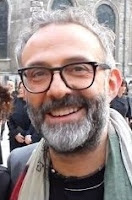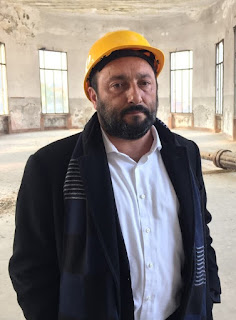Eleonora Duse – actress
Performer 'became' the person she played with her whole being
Regarded as one of the greatest acting talents of all times, Eleonora Duse was born on this day in 1858 in Vigevano in Lombardy. Often simply known as Duse, she was admired for her total assumption of the roles she played. In 1947, the film, Eleonora Duse, was made about her life. She began acting at the age of four, joining her father and grandfather in the profession. She worked in a troupe with her family, travelling from city to city. Duse became famous for creating Italian versions of roles made famous by the actor Sarah Bernhardt. Duse toured South America, Russia and the US, beginning the tours as an unknown actor, but leaving in her wake a general recognition of her genius. She had an affair with the Italian poet, Arrigo Boito, who was the librettist for the composer, Giuseppe Verdi. They carried out their relationship in a clandestine manner, but the letters they exchanged have survived and they remained on good terms until Boito’s death in 1918. In 1895 Duse met the writer Gabriele D’Annunzio and they became involved romantically as well as professionally. D’Annunzio wrote four plays for her but when he gave the lead in La Città Morta to Sarah Bernhardt instead of her, Duse ended her relationship with him. Read more…
___________________________________________________________
Alessandro Mazzinghi - boxing champion
Tuscan fighter held world title twice
The boxer Alessandro 'Sandro' Mazzinghi, who won the world light middleweight championship twice in his 64-fight career, was born on this day in 1938 in Pontedera in Tuscany. Mazzinghi won the title for the first time at the Velodromo Vigorelli in Milan in September 1963, defeating the American Ralph Dupas, defending his title successfully in a rematch in Sydney, Australia in December of the same year. He lost the crown to fellow Italian Nino Benvenuti in 1965 at the San Siro football stadium in Milan but regained it at the same venue in May 1968, defeating the South Korean Ki-Soo. He did so after recovering from an horrific car crash in January 1964 that claimed the life of his young wife, Vera, only 12 days after they were married. The couple had been on their way home to Pontedera from a gala dinner in Montecatini Terme in Tuscany when their car slid off a muddy road in heavy rain and collided with a tree. Vera was killed instantly and Mazzinghi, who was thrown from the car, suffered a fractured skull. He was in a critical condition for several days but recovered. Amazingly, he was back in the ring within weeks. Read more…
__________________________________________________________
Ruggero Raimondi - opera star
Singer overcame shyness to become a great bass-baritone
The bass-baritone singer Ruggero Raimondi, who would become famous for his performances in the operas of Verdi, Rossini, Puccini and Mozart, was born on this day in Bologna in 1941. Blessed with a mature voice at an early age, he was soon encouraged to pursue a career in opera and enrolled at the Giuseppe Verdi Conservatory in Milan at the age of only 16, later continuing his studies in Rome at the Accademia di Santa Cecilia. He won a national competition for young singers in Spoleto and made his debut in the same Umbrian city in 1964 in the role of Colline in Giacomo Puccini's La bohème in 1964. Soon afterwards, he appeared in the leading role of Procida in Verdi’s I vespri siciliani at the Rome Opera House. Raimondi was also studying accountancy, wary that his ambitions in opera might not materialise. But then came an audition at La Fenice opera house in Venice, after which Raimondi was offered a five-year contract. Naturally shy, he struggled with the acting element to operas but was able to conquer his inhibitions with the help of acting lessons and work with a vocal coach who taught him interpretation. Read more…

























